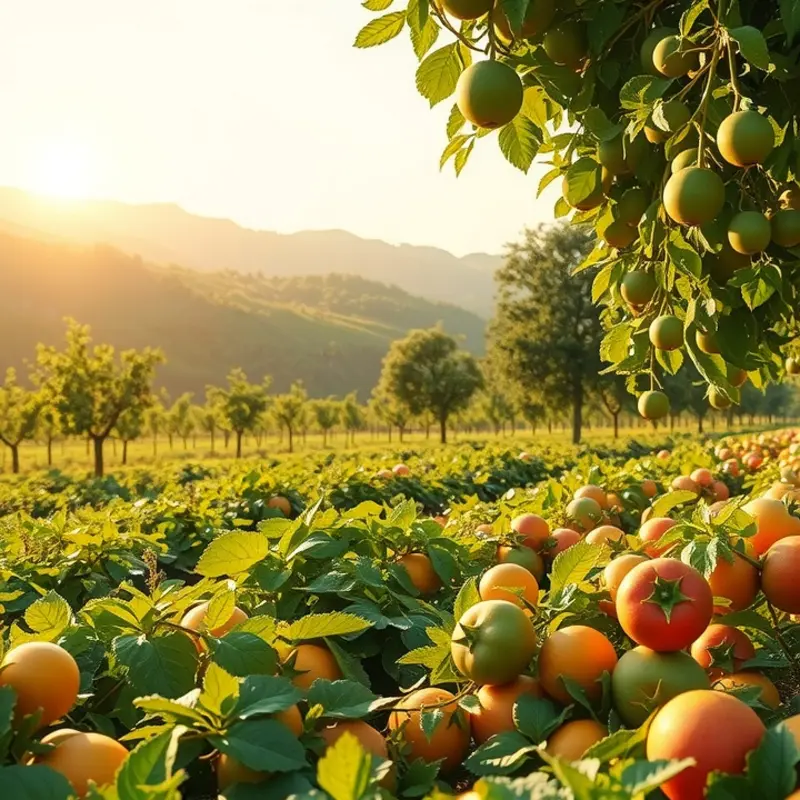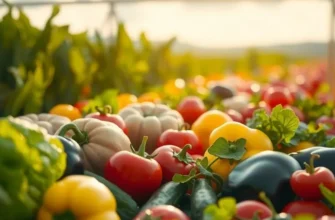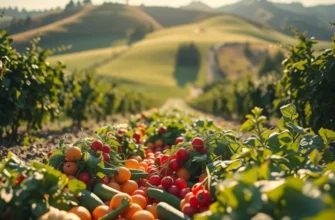Grilling vegetables can elevate any meal, adding a smoky, rich flavor and vibrant colors. However, the fear of sticking can deter many home cooks from mastering this skill. With the right preparation and techniques, you can grill a variety of vegetables without them becoming unmanageable, ensuring they come off the grill beautifully cooked and intact. Let’s explore practical tips to keep your veggies from sticking while enhancing their natural flavors.
Preparation: The Key to Non-Stick Grilling

Grilling vegetables to perfection begins long before the grill is lit. The initial steps of slicing, seasoning, and marinating are pivotal in ensuring your vegetables do not stick to the grill surface. Each of these preparation techniques plays a significant role in achieving the ideal texture and taste.
First, proper slicing is vital. Uniform slices not only ensure even cooking but also reduce the chances of sticking. For most vegetables, aim for slices or chunks that are about a half-inch thick. This thickness allows the veggies to cook through without falling apart. Remember that some vegetables, like bell peppers and eggplants, benefit from being cut into larger pieces. Their fleshy nature holds better when grilled, preventing them from slipping through the grates.
Seasoning your vegetables with a good quality oil is a simple yet effective way to prevent sticking. Oils with high smoke points, such as avocado or grapeseed oil, work well. A light coat is sufficient—over-oiling can cause flare-ups and lead to an undesirable smokiness. Use a basting brush or gently toss your veggies in a bowl with oil to achieve a balanced coating.
Marinating adds flavor and tenderness to your vegetables. Opt for marinades that use acidic components, such as lemon juice or vinegar. These ingredients not only break down tough fibers, making vegetables more tender, but also create a thin layer that assists in non-stick grilling. Limit marinating time to about 15-30 minutes to avoid overly saturated textures, especially for softer vegetables.
While preparing your vegetables, consider the benefits of brining. Soaking veggies like zucchini or slices of eggplant in a saltwater solution for 30 minutes can limit moisture loss during grilling. This process enhances flavor and firmness, reducing the propensity to stick.
Another crucial aspect is drying. After washing your vegetables, take the time to pat them dry with paper towels. Moisture left on the surface can cause steam when grilling, which not only affects the texture but can lead to sticking as well. A dry surface, combined with oil, forms a protective barrier between the veggies and the grill.
As you think ahead to grilling season, incorporating the right preparation techniques will elevate your vegetable dishes. A well-prepared ingredient is a foundational step toward culinary success, echoing the importance of ingredient batching in effective meal preparation. For more insights on optimizing ingredient usage, check out practical ingredient batching.
Mastering preparation doesn’t just end with food. It involves understanding your grill. Preheat it well—a hot grill sears the veggies quickly, locking in moisture and flavor, while reducing sticking risks. Once heated, use a grill brush to ensure the grates are clean and debris-free. Pairing this cleanliness with your well-prepped vegetables guarantees an impeccable grilling experience every time.
Grilling Techniques for Perfectly Cooked Veggies

Grilling vegetables transforms them into delicious, smoky delicacies. Achieving a perfect char without sticking, however, requires more than just luck. The right tools, temperatures, and timing will see you through to success.
Tools of the Trade
Investing in the right grilling tools can make all the difference. Start with a pair of sturdy tongs. They should offer a comfortable grip and enough length to keep your hands away from the heat. A grill basket is another useful asset. It’s especially handy for smaller vegetables that might slip through the grates. Preheating your grill is another step not to overlook. A heated grill, complete with clean and oiled grates, lessens the chance of sticking. Utilize a brush or cloth to coat the grates with oil just before placing your veggies down.
Temperature Control
Temperature is crucial in grilling. Vegetables cook optimally at medium to medium-high heat. This range ensures they caramelize properly without charring excessively. For larger cuts, consider a two-zone grill setup. This involves creating direct and indirect heat zones. Sear the veggies over direct heat initially to lock in flavor, then move them to indirect heat to finish cooking evenly. Monitoring these zones can be key to managing veggies with varied cooking times, such as peppers and zucchini.
Timing Is Everything
Timing varies across different vegetables, and knowing this can improve the evenness of your cook. Denser vegetables like potatoes and carrots benefit from pre-cooking. Par-boil them briefly and finish on the grill for that desirable grilled texture. Softer vegetables like asparagus and tomatoes, on the other hand, require less time. Begin checking them after just a few minutes. Remember to leave space between vegetables on the grill to allow heat to circulate effectively around each piece.
Practical Tips
Before grilling, toss your vegetables lightly in oil. This additional coating helps repel stickiness and enhances the grilling process. Furthermore, if you’re using a marinade, allow excess liquid to drip away before laying the veggies on the grill.
Proper storage and preparation will help maximize efficiency and reduce waste. For tips on eco-smart kitchen practices, explore ways to achieve less waste in your kitchen storage.
To maintain vibrant color and texture, refrain from overcooking. Lightly charred marks enhance flavor but take care not to burn them. Grilled veggies are as much about appearance as they are about taste.
Armed with these techniques, your grilled vegetables will come off the grates with ease and onto plates brimming with flavor. The journey from preparation to table will not only elevate your meals but also enhance your outdoor culinary experience.
Final words
Grilling vegetables doesn’t have to be intimidating. With the right preparation and techniques, you can easily overcome the challenges of sticking and achieve delicious, beautifully charred results. Remember to choose a variety of fresh veggies, season them well, and utilize proper grilling methods, including the right equipment and temperature. Whether you’re a seasoned chef or just starting, these tips will enhance your grilling experience and make vegetables the star of your next meal. So fire up your grill and enjoy the vibrant flavors that properly grilled vegetables can bring to your table!







